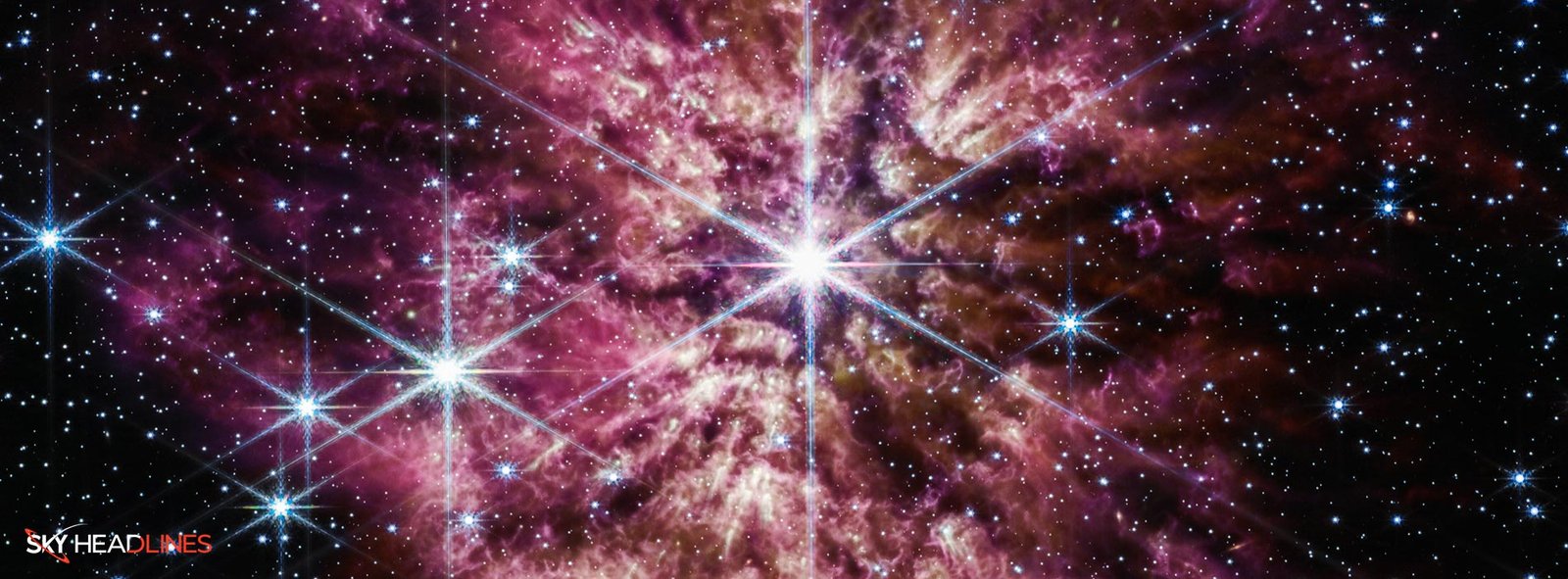The James Webb Space Telescope has made one of its first images of WR 124, a Wolf Rayet Star 15,000 light-years away in the constellation Sagittarius. The star is one of the brightest, most massive, and briefly observable stars known.
Now come to the point that,
Webb’s instruments reveal the detailed structure of WR 124’s nebula!
The Mid-Infrared Instrument (MIRI) on Webb reveals that Wolf-Rayet Stars are effective dust emitters. In longer mid-infrared wavelengths, cooler cosmic dust illuminates, revealing the structure of WR 124’s nebula. Webb’s Near-Infrared Camera (NIRCam) balances the brightness of the star core of WR 124 with the intricate details in the fainter gas surrounding it.
Here is a term to know,
What is WR 124?
The material-ejected ring nebula M1-67 surrounds WR 124 a Wolf–Rayet Star in the constellation Sagitta. At a radial velocity of around 200 kilometers per second, it is one of the fastest runaway stars in the Milky Way. Paul W discovered it in 1938. Merrill and classified as a Wolf–Rayet Star with a high velocity. WR 124 is 30 times the Sun’s mass and has already shed 10 Suns’ worth of material. As the blasted gas recedes from the star and cools, cosmic dust develops and emits infrared light that Webb can detect.
So, here arises the question,
What is the importance of observing the rare Wolf-Rayet phase?
Before going supernova, massive stars go through a short Wolf-Rayet phase. Webb’s detailed observations of this rare phase are helpful to astronomers because they show how this phase works. Wolf-Rayet stars are now shedding their outer layers, resulting in their characteristic gas and dust halos.
But,
How does WR 124 help in understanding the early history of the universe?
Astronomers use stars like WR 124 as analogs to comprehend better a crucial period in the universe’s early history. These dying stars initially seeded the newborn cosmos with heavy elements formed in their cores, elements that are now widespread across the universe, including on Earth.
Furthermore,
Contribution to the universe’s “dust budget”!
Astronomers are interested in the genesis of cosmic dust that can survive a supernova explosion and contribute to the universe’s overall “dust budget” for a variety of reasons. Dust plays an essential function in the universe as it provides shelter for budding stars, aids in the formation of planets, and provides a platform for molecules, including the building blocks of life on Earth, to form and clump together. Despite dust’s crucial roles, there is more dust in the universe than can be explained by astronomers’ existing dust-formation hypotheses. The universe has an excess of dust in its budget.
We will be looking forward for,
Future possibilities for studying cosmic dust!
Before Webb, dust-loving astronomers required more specific data to investigate concerns of dust creation in environments such as WR 124 and whether the dust grains were large enough to survive the supernova and become a significant contributor to the total dust budget. Webb offers new opportunities for researching cosmic dust. It is best viewed at infrared light wavelengths.

Lastly,
Summary:
NASA’s James Webb Space Telescope has looked at WR 124, a Wolf-Rayet Star that is 15,000 light-years away and is in the constellation Sagittarius. Webb’s instruments have given us a clear picture of how the star’s nebula is put together. This shows that Wolf-Rayet Stars are good at making dust. Before going supernova, WR 124 goes through a short phase called Wolf-Rayet, which is interesting for astronomers to study. Astronomers can also use stars like WR 124 to learn about a critical time in the universe’s early history. Cosmic dust is essential to the universe, and Webb gives us new ways to study it. Infrared wavelengths of light show the best cosmic dust, which Webb can also see.





